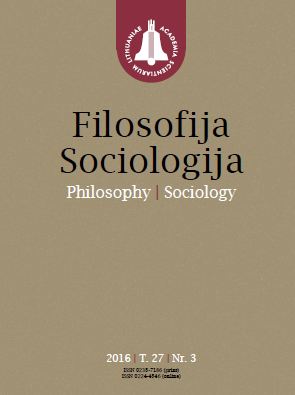Čiabūties (Dasein) egzistencinių (existenziell) ir egzistencialiųjų (existenzial) apriorinių struktūrų analizė M. Heideggerio veikale Būtis ir laikas
The analysis of a priori existentiell (existenziell) and existential (existenzial) structures of Dasein in Heidegger’s book Being and Time
Author(s): Tautvydas VėželisSubject(s): Contemporary Philosophy, Existentialism, Phenomenology, Hermeneutics
Published by: Lietuvos mokslų akademijos leidykla
Keywords: being; time; world; metaphysics; tradition;
Summary/Abstract: The aim of this article is to discuss the main ideas explicated in Heidegger’s work “Being and Time”. The analysis of this book focuses primarily on the main problems of classical ontology. Heidegger concentrates on the conception of the world and explicates the basic a priori structures of Dasein’s being. The analysis of existential structures of this work uncovers the modes of being peculiar to Dasein. The circle of understanding belongs to the structure of the meaning of being, which is the main axis in this philosophy. Heidegger’s contention is that an object of understanding can be placed in the world. This means that an object can have meaning for Dasein only if it can be apprehended as having functional relations to other objects within the relational network constituting the world. The meaning of being is hence the way we understand and constitute the categories of being by our existential perception and conceptual frameworks.
Journal: Filosofija. Sociologija
- Issue Year: 2016
- Issue No: 3
- Page Range: 257-265
- Page Count: 9
- Language: Lithuanian

